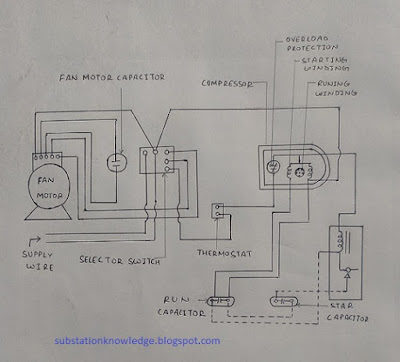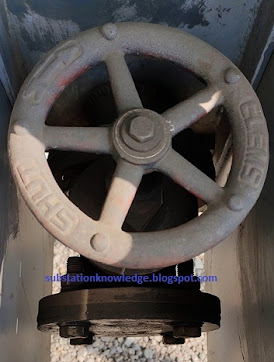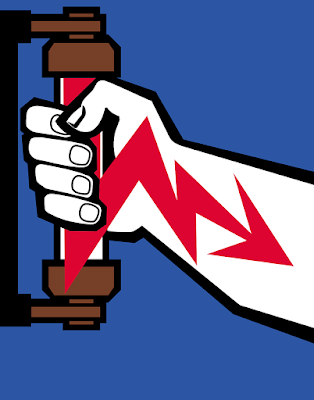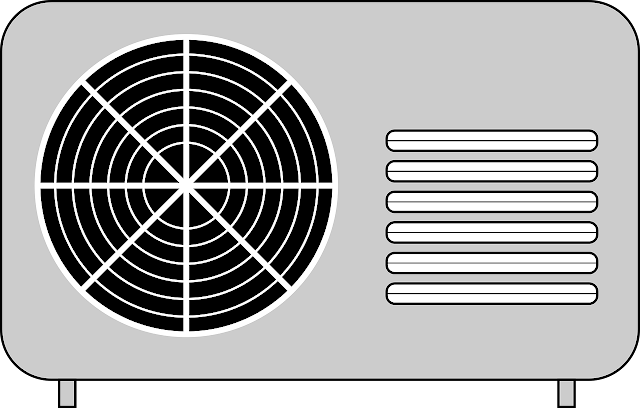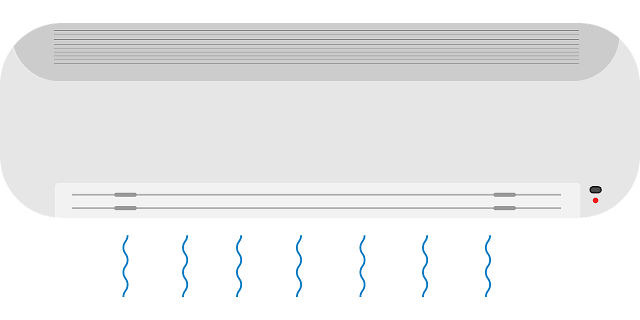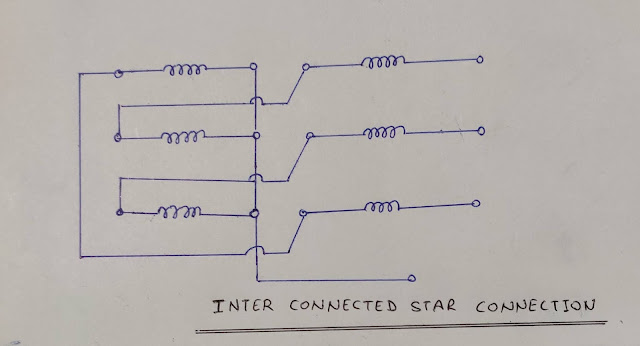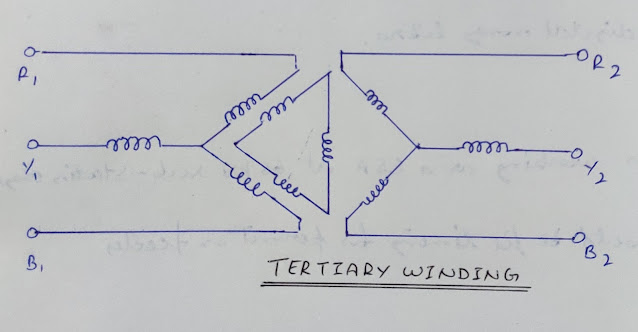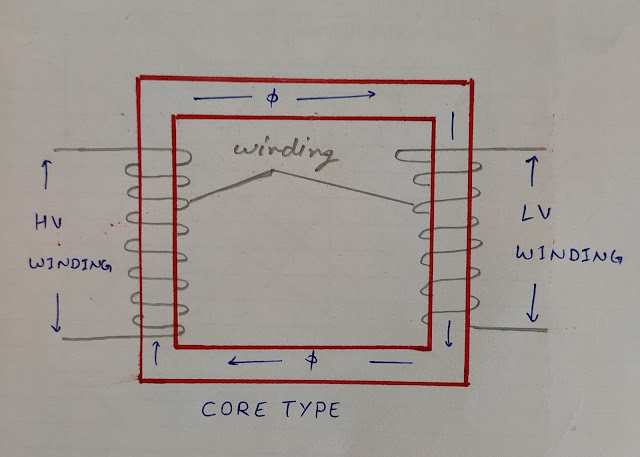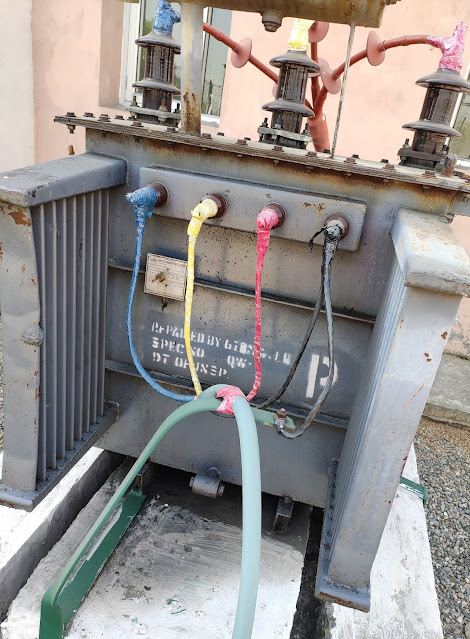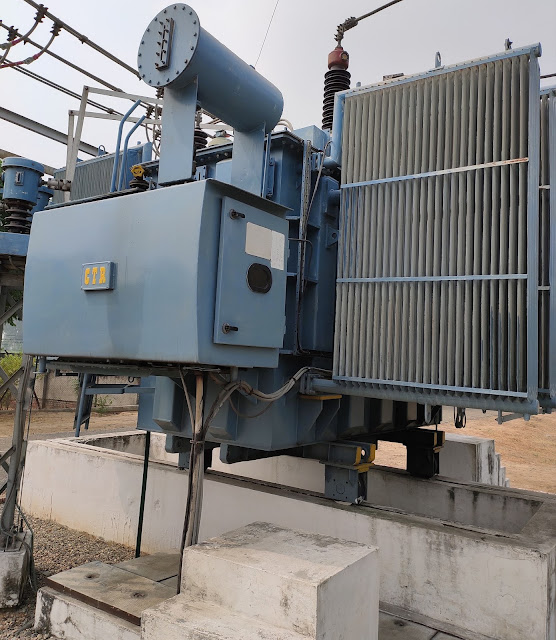DIFFERENT TYPES OF TRANSFORMER:The different type of transformer is given below:
1.According to the construction of magnetic circuit:
a) Core type transformer: In this type transformer the winding is wound on the both side of limbs.The given below image shows the core type transformer.
Main features of core type transformer is given below:
a) It provides a single magnetic path.
b) The primary and secondary winding are mostly of cylindrical form and concentric.
c) Most of the portion of the core gets covered by two winding.
d) The two winding are uniformly distributed over two limbs of transformer.
e) The repairing of winding is easy.
f) Due to uniform distribution of winding natural cooling is quite effective.
b) Shell type transformer: In this type of transformer the winding (both primary and secondary) is wound on the central limb.So entire flux passes through the central part of iron core.But outside the central core it divides into two half going in each direction.The given below image shows the shell type transformer.
Main features of Shell type transformer is given below:
a) The core provides double magnetic path.
b) It provide good mechanical protection to winding,because it wound on central limb.
c) Low leakage flux.
d) Natural cooling is poor.
→ If shell type and core type transformer compare,then we see that core type transformer has more space for insulation so it is preferred for high voltage.
2.According to the connections:
1.Star-Delta connection: In this type of connection the voltage phase displacement in both side voltage is 30 degree.The total bush in this type of transformer is 7 (4 in HV side and 3 in LV side).The advantages and disadvantages of this type of transformer is given below:
Advantages:
a)The primary is connected to star and secondary is connected in delta.So,the primary side phase voltage is less (57.73%) to the line voltage so the less number of turns as well as insulation required in this type of transformer.
b) In the primary side due to presence of neutral point protective relay can be used for protection purpose.
c) There is no possibility of displacement of neutral point.
d) Due to delta connection in secondary side the third harmonic waves does not effective.
Disadvantages:
a) Due to 30 degree phase displacement in both side voltage,this cannot be used in parallel with star-star or delta-delta connected transformer.
Application:
This connection is used in step-down power transformer.Mostly in secondary transmission substation.
2. Delta-Star connection: In this type connection the primary of transformer is delta and secondary is star connected.The voltage phase displacement in botn side voltage is 30 degree.The given image shows the delta-star connection transformer.The given below image show the delta star connection type transformer.
Advantages:
a) The secondary side is star connected.So secondary side phase voltage is less (57.7%) than line voltage.So less number of turns in secondary side and low insulation level is required.
b) In the secondary side due to presence of neutral point protective relay can be used for protection purpose.
c) Due to delta connection in primary side the third harmonic waves does not effective.
Disadvantages:
a) Due to 30 degree phase displacement in both side voltage,this cannot be used in parallel with star-star or delta-delta connected transformer.
Applications:
a) This connection is used for step-up transformer and this type of transformer is used at generating station for high voltage transmission.
b) This connection is also used for 3 phase 4 wire distribution transformer.
3.Delta-Delta connection: In this type connection the primary and secondary side of transformer is delta connected.The phase voltage displacement on both side is zero degree.These type of connections are suitable for large transformer working on low voltage and high current.
Advantages:
a) Current in winding is reduced to 57.7% of line current.So cross sectional area of conductor reduces.
b) Unbalanced load do not effect much.
c) Third harmonic waves does not effective.
Disadvantages:
a) In this system neutral point is not available.Therefore 3 phase 4 wire connection is not possible.
b) High insulation is required.
c) Large number of turns required.
d) We cant obtain low voltage as similar to star-star connection.
Applications:
This connection type of transformer is used to low voltage transmission sub-stations.
4.Star-Star connection: In this type of connection the primary and secondary side of transformer is star connected.The phase voltage displacement on both side is zero degree.These type of connection are suitable for high voltage transformer which have small size.
The given image shows the star-star connected transformer,two NCT is used for neutral point earthing and for protection purpose:
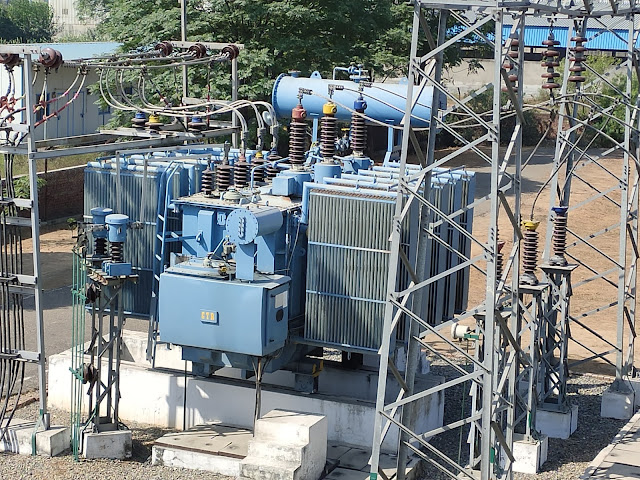 |
Add caption
|
Star star connection
Advantages:
a) The phase voltage is less (57.7%) to line voltage.So less number of turns required.
b) Less insulation required.
c) Neutral point is available.So this type of connection is used for 3 phase 4 wire connection.
d) By earthing the neutral point system stability increases.
e) Due to presence of neutral point protective relay can be used for protection purpose.
f) In this type of connection line current equals to phase current.So conductor size is thick and it can bear overload current and short circuit current at some extent.So safety factor of system increased.
Disadvantages:
a) If the neutral is not earthed.Than at the time of unbalanced load neutral is shifted towards one of phase.So earthing of neutral is necessary.
b) Due to open circuit,third harmonic waves most effect this type of connection.
Applications:
This type of connection is used for transformer which is used in high voltage distribution substation.
3.According to utility:
1.Power transformer: The power transformers should be designed for maximum efficiency at or near full load.So,it is put in operation during load periods and disconnected during light loads periods.
Power transformer are designed to have greater leakage reactance than is permissible in distribution transformers because in the case of power transformers,voltage regulation is less important than the current limiting effect of higher leakage reactance.The given shows the power transformer.
These are used in generating stations and substations at each end of power transmission lines.This transformer rating above 200KVA.
The given below image shows the power transformer.
2.Distribution transformer: The transformer used to step-down voltage to a standard service voltage is known as distribution transformer.They are kept in operation all the 24 hours in a day whether they are carrying any load or not.Therefore energy loss in iron throughout the day while energy loss due to copper losses when transformer is loaded.Therefore power transformer should be designed to have maximum efficiency at a load much lower than full load (about 50%).
This transformers rating up to 200KVA.
The given image shows the distribution transformer.
